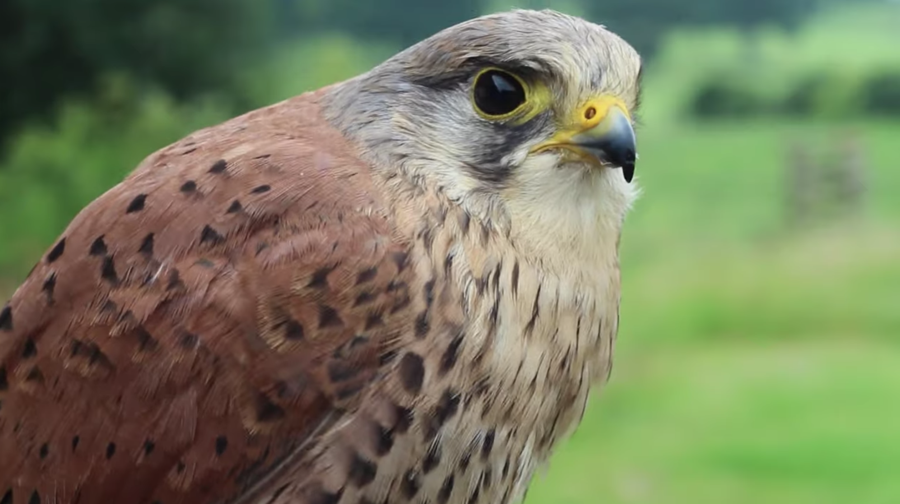Look across England’s moors, heaths, farmland, and even in bustling city centers, and you might spot the Common Kestrel, one of England’s most popular birds of prey. They are smaller raptors famous for their keen eyesight and incredible head stabilization, which allows them to track and hunt while hovering far above land.
This “micro-documentary” by West of England Falconry introduces Caspar the Kestrel and Naomi Johns, the organization’s director. She shares how kestrels live in the wild, how they hover, and how everyone can help increase their population, which has declined since the 1970s.
“What can we do to help? By supporting a healthy and balanced, biodiverse ecosystem for kestrels, we are playing our part.”

“We can’t just conserve one species on its own; we have to look after the whole environment. So how can you do that from home and what can you do that will help the species? Avoid damaging rodenticide. These sorts of chemicals that do get into the food chain cause big problems for rodent eaters… if you have got a pest problem speak to an experienced environmentally concerned pest control professional for advice, and looking at other humane alternatives instead.
“Look after grassy verges, support wildflowers, and create a habitat for insects in your green spaces, and then you will start to see the ecosystem develop around that.”

More about kestrels from the Woodland Trust:
“The kestrel is a vole specialist, with the field vole accounting for the majority of its diet. It will also take mice and shrews, as well as small birds and occasionally worms and insects. Birds are taken more often in places where voles are scarce, such as in urban areas.
“Several hunting techniques are used by kestrels, but the most well-known is the hover. A kestrel will fly into the wind and use its tail and wings to hold its position in the air. Keeping its eyes fixed on the ground, it will swiftly drop to pounce on any prey sighted.
“With extremely sharp eyesight, kestrels can spot a beetle from 50 metres away. They can even see ultraviolet light, which is invisible to the human eye. This means they can detect the urine trails left by rodents on the ground, helping the birds locate their prey.”

Follow West of England Falconry on Instagram and Facebook, and at westofenglandfalconry.org.uk.
Related reading: Red, Amber, Green: The U.K.’s bird conservation status lists explained.
Watch these related videos next:
• Living with a Wild Bird: What’s it like to become a falconer?
• The American Kestrel falcon’s head stabilization skills
• The kingfisher’s gaze stabilization
• The silent flight superpower of a stealthy predator: The Owl
Curated, kid-friendly, independently-published. Support this mission by becoming a sustaining member today.


